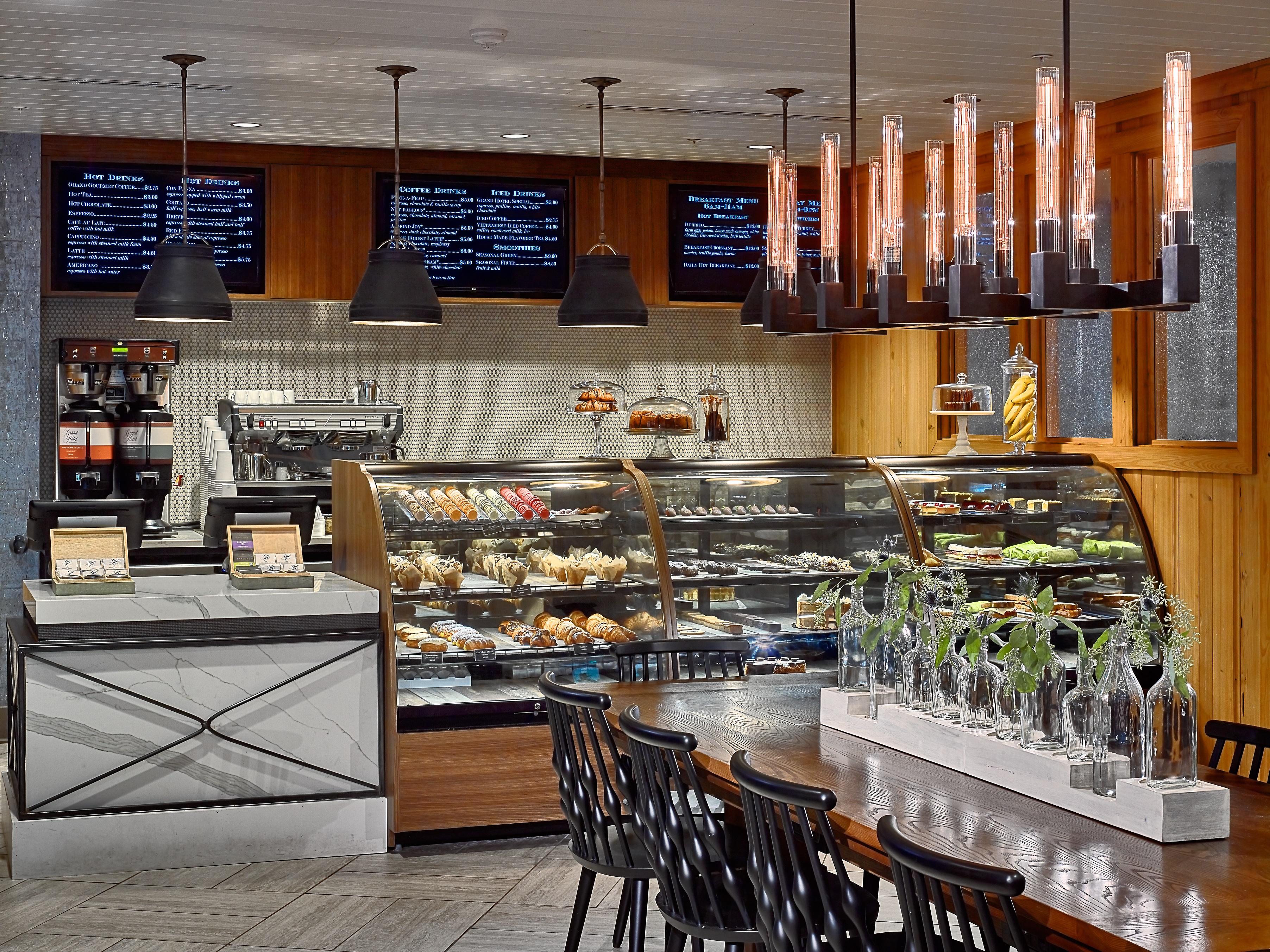When Storytelling Is at the Forefront of Design
Libby Sims Patrick talks about her three decades of experience in creating and leading a boutique design studio in Atlanta.

Libby Sims Patrick, CEO & Founding Principal, Sims Patrick Studio. Image courtesy of Sims Patrick Studio
Libby Sims Patrick is a firm believer that architecture is a form of visual storytelling. Throughout her 30-year career, she has always strived to create authentic spaces and integrate narratives into her projects.
After spending a decade with other architecture firms, Libby Sims Patrick built up her company from scratch in 2000, and is currently the CEO & founding principal of her boutique firm based in Atlanta. Sims Patrick Studio specializes in commercial real estate design, focusing on projects in the hospitality and retail industries, but its creative team has also taken on residential, office and mixed-use developments.
Commercial Property Executive asked Sims Patrick to reflect upon her professional background and weigh in on what’s new in commercial real estate design, particularly in the retail sector.
READ ALSO: Why Having a Workplace Strategy Is a Must Today
Please tell us more about what led you to create Sims Patrick Studio and the principles behind it.

Maisie’s Marketplace, a cafe within Belleview Inn in Belleair, Fla. Image courtesy of Sims Patrick Studio
Sims Patrick: Considering all I learned throughout my career, I wanted to create a collaborative environment that focused on foregrounding storytelling in design. It has always been a strong philosophy of mine, and by extension the firm’s, to make sure we are intentional with our designs—what story are we telling, how are we improving the built environment via this narrative—and applying this philosophy to all styles of interior design. We have been fortunate throughout our 20 years in business to work with clients that have unique visions and exciting stories to tell.
You managed to grow Sims Patrick Studio from a humble and small beginning to a respected and well-known boutique design studio. What were the most important lessons you learned along the way?
Sims Patrick: The crucial lessons I have learned have been about the importance of collaboration and respect amongst teams, especially when it comes to being a woman in the industry. We prioritize fostering a healthy, cooperative work environment for our staff, and I go out of my way to encourage work-life balance. Additionally, I have learned the importance of relationships—great relationships are as important as great design, and that applies not only to external client relationships, but to internal team relationships as well.
I am also especially passionate about education and mentoring. I am lucky to be at a stage in my career where I can use the experience I’ve gained over the years and pass that wisdom along to help empower young professionals.
What are some of the most pressing challenges women in leadership roles face today in the CRE industry?
Sims Patrick: In all sectors, women must work extra hard to be taken seriously, which has always been an overarching issue in the industry. Throughout my career, especially early on when I often found myself as the only woman in the room, I learned quickly how stereotyping can affect how women are treated in the office and on job sites, and this continues to be a pressing challenge today. We also need to make sure, especially on the CRE side, that women are equally considered as partners on projects.
How much has the design industry evolved in the past three years, in your opinion?
Sims Patrick: Over the past few years, sustainability has definitely come a long way, particularly on the vendor side of things. There is more to choose from, and the offerings are beautiful as well as durable. Being able to specify sustainable items is important to us but is impossible to do by ourselves, so it’s been rewarding to be able to see our vendor partners focus on being environmentally friendly in both their products and processes.
Additionally, the big push we saw surrounding indoor-outdoor spaces and biophilia during the pandemic isn’t going anywhere. Customers still crave fresh air and a connection to nature and that, in turn, affects the direction of our work.
Three years later, the design industry as a whole is still playing catch up from COVID-19. This means we are still working with expedited schedules. We’re always behind, even before we get started! One benefit of this is that it has helped designers across the board keep their priorities straight and keep project processes more focused.
Finally, we have been seeing some exciting growth and development in smaller markets on a national level. Designers, and as a result the consumer, are discovering the beauty of the U.S. again, and the special things that are happening in our smaller towns.

Retail space inside Grand Hotel Autograph Marriott in Point Clear, Ala. Image courtesy of Sims Patrick Studio
Tell us a bit about some retail projects you are currently working on. What makes them stand out?
Sims Patrick: We have a lot of exciting things in the pipeline at the moment—coastal resorts, urban-based experiences, and projects based on estates. In general, our work continues to prioritize the storytelling aspect of design. That has been the throughline of the retail work we have done in the past and the projects we are doing today.
How can design be used to thoughtfully blend retailers’ needs with customers’ expectations in such spaces?
Sims Patrick: When it comes to retail, consumers are definitely still interested in that ‘Instagrammable’ moment. Shoppers will leave their homes to shop brick and mortar in order to have a once-in-a-lifetime, in-person experience that they can share on social media.
From a hospitality perspective, guests’ expectations are always evolving, especially in the last few years as travel priorities have greatly shifted. People are looking for a totally immersive and unique experience that is worth their investment. This expectation absolutely extends to the on-site retail offerings, which should feel like a cohesive extension of the overall experience. Designers need to make sure they are being thoughtful when they approach their concepts, offering one-of-a-kind boutique experiences in their stores.






You must be logged in to post a comment.